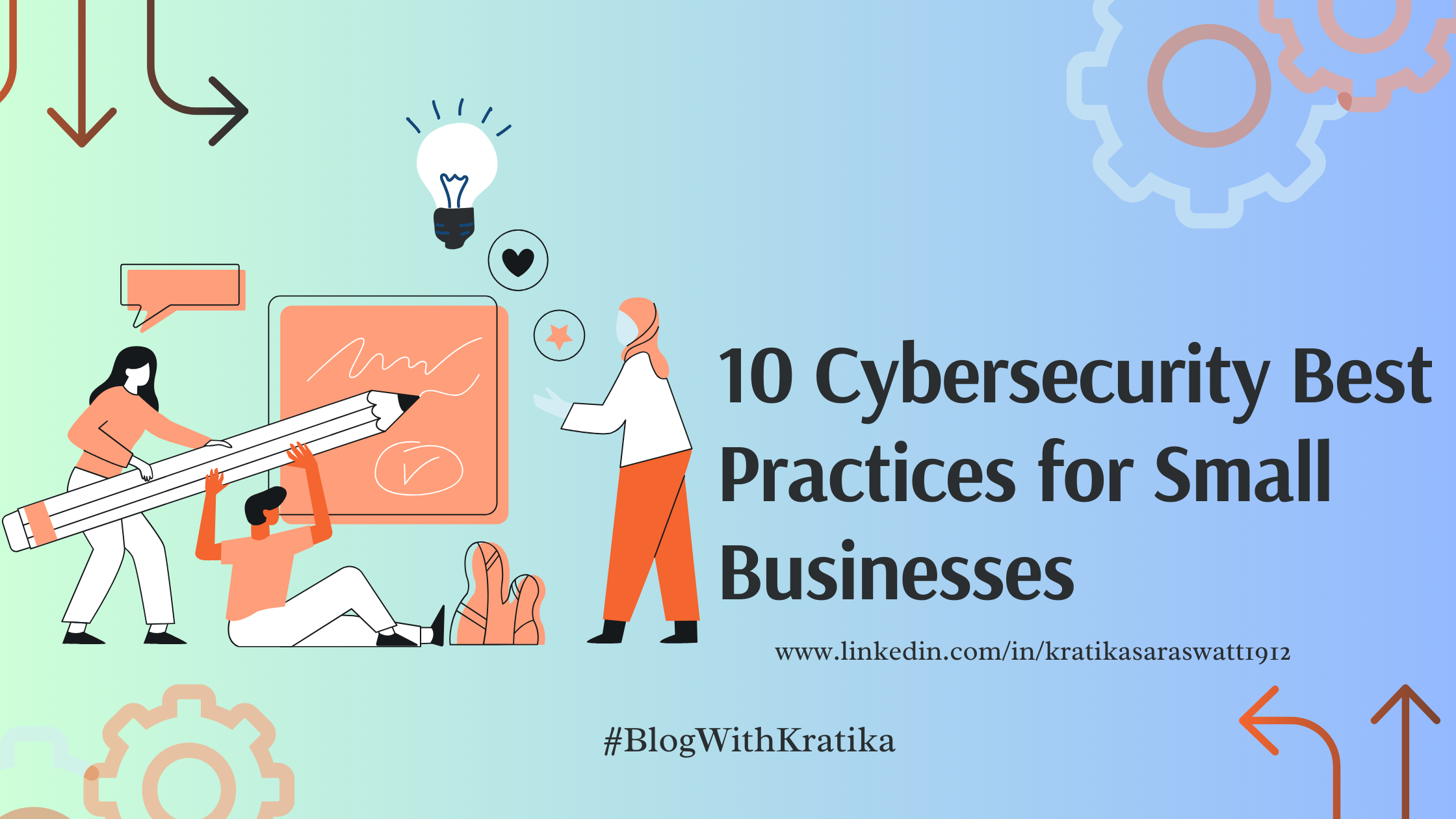10 Cybersecurity Best Practices for Small Businesses
 Kratika Saraswat
Kratika Saraswat
Small businesses are increasingly becoming targets for cyberattacks. Hackers often view them as easy prey, assuming they lack robust security measures. However, with the right strategies, small businesses can significantly enhance their cybersecurity posture without breaking the bank. Here are 10 essential best practices to protect your business from cyber threats.
1. Train Employees in Cybersecurity Awareness
Your employees are your first line of defense against cyber threats. Many breaches occur due to human error, such as clicking on phishing emails or using weak passwords.
Conduct regular training on recognizing phishing scams and secure online behavior.
Encourage employees to report suspicious activities promptly.
2. Use Strong Passwords and Implement Multi-Factor Authentication (MFA)
Weak or reused passwords are one of the easiest ways for hackers to access sensitive information.
Enforce strong password policies requiring a mix of uppercase, lowercase, numbers, and special characters.
Use MFA for all critical accounts to add an extra layer of security.
3. Keep Software and Systems Updated
Outdated software often has vulnerabilities that hackers can exploit.
Enable automatic updates for operating systems, applications, and antivirus software.
Regularly review and patch any outdated systems to ensure they are secure.
4. Install Firewalls and Antivirus Software
Basic security tools like firewalls and antivirus software act as a barrier against many cyber threats.
Use a firewall to protect your network from unauthorized access.
Install reputable antivirus software on all devices and ensure it’s updated regularly.
5. Back Up Your Data Regularly
Ransomware attacks can lock you out of your data, causing significant downtime and financial loss.
Schedule automatic backups of critical data to secure cloud storage or external drives.
Test your backups periodically to ensure they can be restored quickly in case of an emergency.
6. Secure Your Wi-Fi Networks
An unsecured Wi-Fi network can be an open invitation for hackers.
Use a strong password for your Wi-Fi and update it regularly.
Ensure your network uses WPA3 or WPA2 encryption for maximum security.
Set up a separate network for guests to prevent unauthorized access to your main systems.
7. Limit Employee Access to Sensitive Information
Not every employee needs access to all your business data. Limiting access reduces the risk of accidental or intentional breaches.
Implement role-based access control (RBAC) to restrict sensitive data to authorized personnel only.
Regularly review access permissions and revoke access when employees leave the company.
8. Develop a Cybersecurity Incident Response Plan
Even with the best defenses, breaches can still occur. Having a plan ensures your business can respond quickly and minimize damage.
Identify key steps for responding to common incidents, such as data breaches or ransomware attacks.
Assign specific roles to employees and conduct regular drills to test your response plan.
9. Work with Trusted IT Professionals
If you lack in-house expertise, consider partnering with a managed IT service provider (MSP).
MSPs can monitor your systems for vulnerabilities and provide timely updates.
They can also help you implement advanced security measures like intrusion detection systems.
10. Stay Informed About Emerging Threats
Cyber threats evolve constantly, and staying updated is critical for protecting your business.
Subscribe to cybersecurity news updates from trusted sources.
Participate in industry webinars and training programs to learn about new threats and solutions.
Final Thoughts
Cybersecurity doesn’t have to be overwhelming or expensive for small businesses. By implementing these best practices, you can create a strong security foundation that protects your business, customers, and reputation. Remember, proactive measures are always more cost-effective than dealing with the fallout of a cyberattack.
Start building your cybersecurity strategy today to safeguard your small business in the digital age.
Subscribe to my newsletter
Read articles from Kratika Saraswat directly inside your inbox. Subscribe to the newsletter, and don't miss out.
Written by
